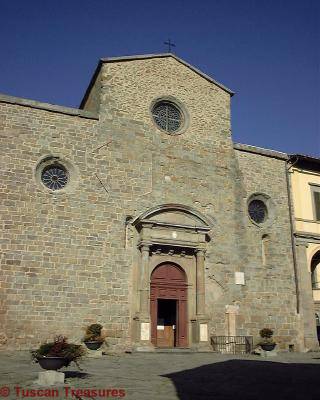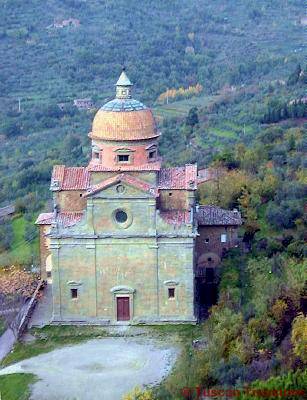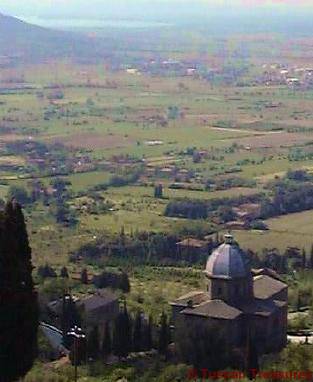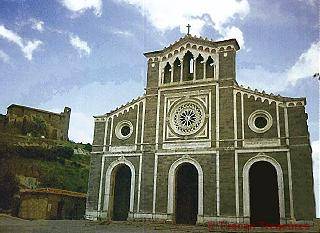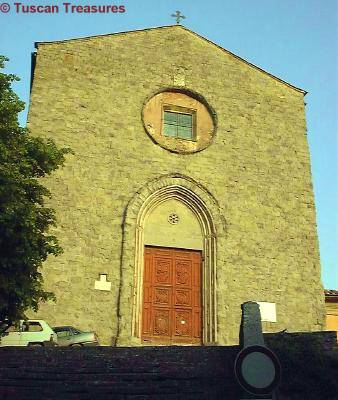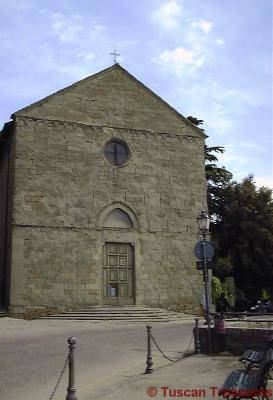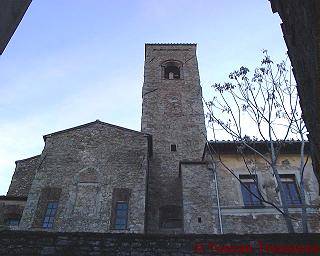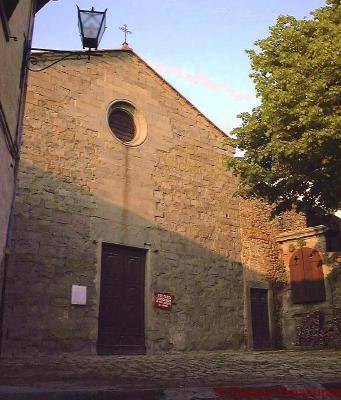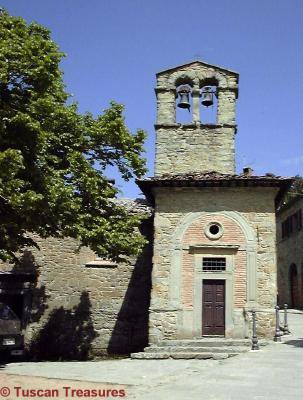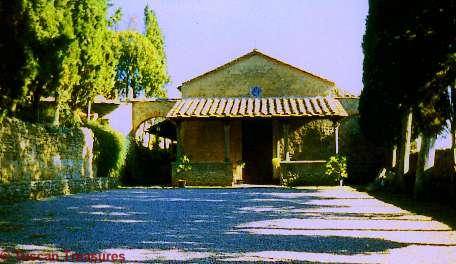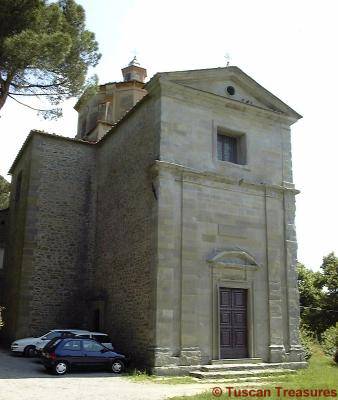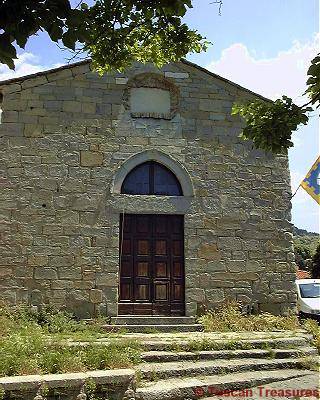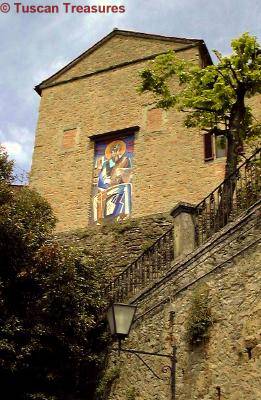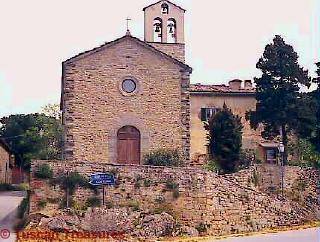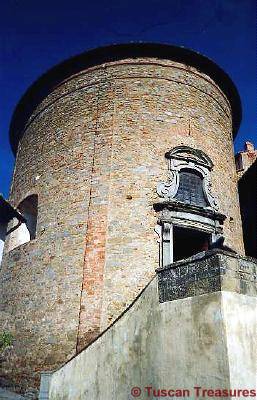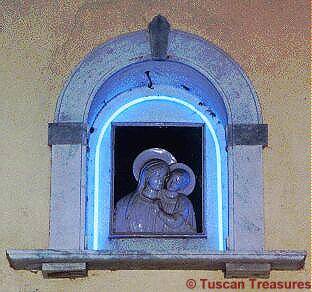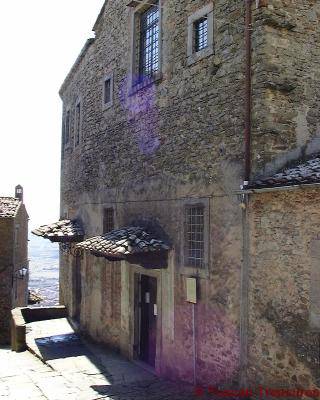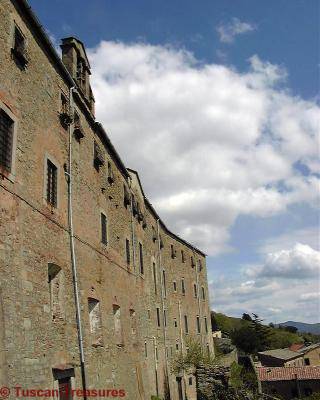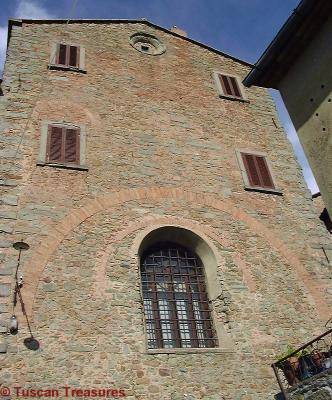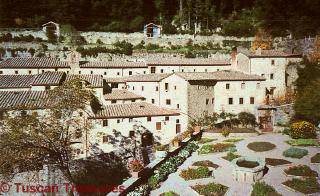Il Duomo (Cattedrale Santa Maria della Assunzione) - exterior; a portion of the facade dates back to the 10th or 11th centuries. Believed to rest on the site of an Etruscan temple. The white plaques at the base of each column contain the arms of the city of Cortona.
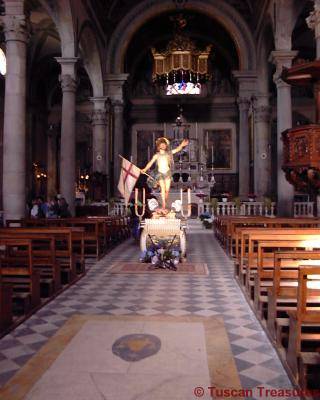
Il Duomo (Cattedrale Santa Maria della Assunzione) - interior
Saturday
evening Mass: 17:00 (18:00 Summer)
Sunday Mass: 10:00 / 12:00 / 17:00 (18:00 Summer)
Santa Maria Nuova (construction started in 1550 on a design by Battista Cristofanello of Cortona; construction inspired by a vision, in March of that year, of the Virgin Mary walking accompanied by 4 candles which was seen on the wall of the Villa Barbi which used to occupy the space)
Santa
Maria delle Grazie al Calcinaio
(construction started in 1485 on design by
Francesco di Giorgio Martini da Siena)
Santa Margherita - exterior; on site of a church dating back to the 900s (also proposed to be originally the site of an Etruscan temple). Santa Margherita di Laviano died in one of the cells here on Feb. 22, 1297. Most of the current structure dates to a remodel by Guiseppe Castelucci in 1895. The Fortezza (Medicea) is to the left of S. Margherita
Mass
Saturday evening: 16:00 (17:00 Summer)
Sunday: 8:00 / 10:00 / 16:00 (17:00 Summer)
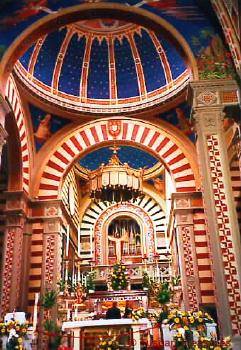
Santa
Margherita - interior (S. Margherita's
body is in a windowed casket on the altar)
San
Francesco - exterior; construction begun by Brother Elia Coppi Jan.
23, 1244 to his design. Relics include the belt, habit, & the
pillow which St. Francis of Assisi was using at his death, and a
piece of the true cross. Frate Elia, who was also the architect and
director of work for the Basilica in Assisi, is buried under the
choir. A reconstruction of about 15 years is now complete and the church has reopened.
Mass
Mon-Sat: 17:00
Sunday & holidays: 10:30
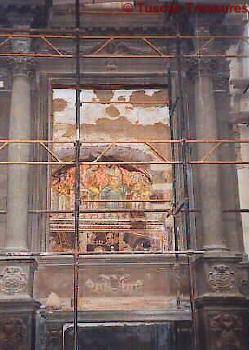
San
Francesco - interior; original
13th c. frescoes uncovered behind
side altar during restoration
San
Domenico - exterior (construction begun 1391; mezzaluna by Beato
Angelico above entry door; Beato Angelico's studio was here)
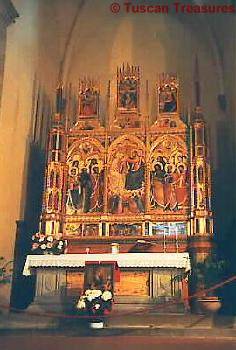
San Domenico - interior
Sunday Mass: 11:00 / 18:00 (18:30 Summer)
Sant'
Agostino (construction started in 1256. A major restoration in 1481,
which included a new chapel for the remains of Beato Ugolino
Zefferini, was carried out at the expense of the Zefferini family.
Remodelled in 1999 and 2000 into a convention center)
Sant'
Antonio Abate (14th century; some work
in 1660s by Salvi Castellucci)
San Cristoforo (original structure dated to 1190s; a fire in 1575 led to significant restoration; the current structure dates mostly to ca. 1705)
Sunday
Mass: 9:00
San Nicolò (dates to ca. 1440; contains marvellous wood-coffered ceiling in addition to paintings by Luca Signorelli)
San Filippo Neri - exterior (construction of present structure begun June 18, 1677; redesigned by Antonio Ianelli in 1696 and completed in 1720)
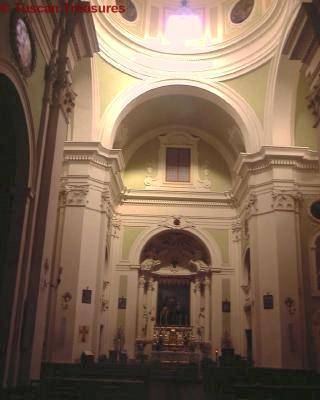
San Filippo Neri - interior
Sunday Mass: 8:30 &10:30
Spirito Santo (construction begun in 1637 to a baroque design by Filippo Berrettini)
Sunday Mass: 8:00
San Vincenzo (believed to have been constructed in the 800s during the reign of either Charlemagne or Charles III & was site of the first bisophric in Cortona; one of the inscriptions - in Roman letters - reads: TEMPORIBVS DN CARVLO IMPERATORI EGO PRB. FIERE FECI PRO AMORE DI ET S CT VN)
San
Marco (1580s; completely remodelled in the 17th century. The mosaic
is by Gino Severini of Cortona who also did the mosaics for the
stations of the cross along Via Margherita. Consists of an upper &
a lower church; the upper church is the Ostello
San Marco
Sunday
Mass: 10:30
Chiesa del
Torreone (constructed in 1632,
dedicated to San Carlo)
San Benedetto (original building predates 1306; current oval structure was built ca. 1722)
Shrine across from Il Duomo/Seminario
Santa Chiara (church & cloistered convent; originally dates to the 13th century with major modifications by Giorgio Vasari in the mid-1500s. Proposed to be original site of a Roman amphitheatre or bath based on the foundations and a Roman cistern found there)
Santissima Trinità
(Cistercian monastery &
church;
dates back to 1545)
Chiesa del Buon Gesù(now Museo Diocesano); construction begun 1498
Le
Celle (first cell by San Francesco in 1211
located just to the right of the main entry)
- now a Capuchin monastery & retreat
Sunday
Mass: 10:00
